An original thesis on space-time.
A JOURNEY INTO THE UNIVERSAL MATRIX

” Those with the courage to explore the weave and structure of the Cosmos, even where it differs profoundly from their wishes and prejudices, will penetrate its deepest mysteries. “
Carl Sagan (1934-1996)
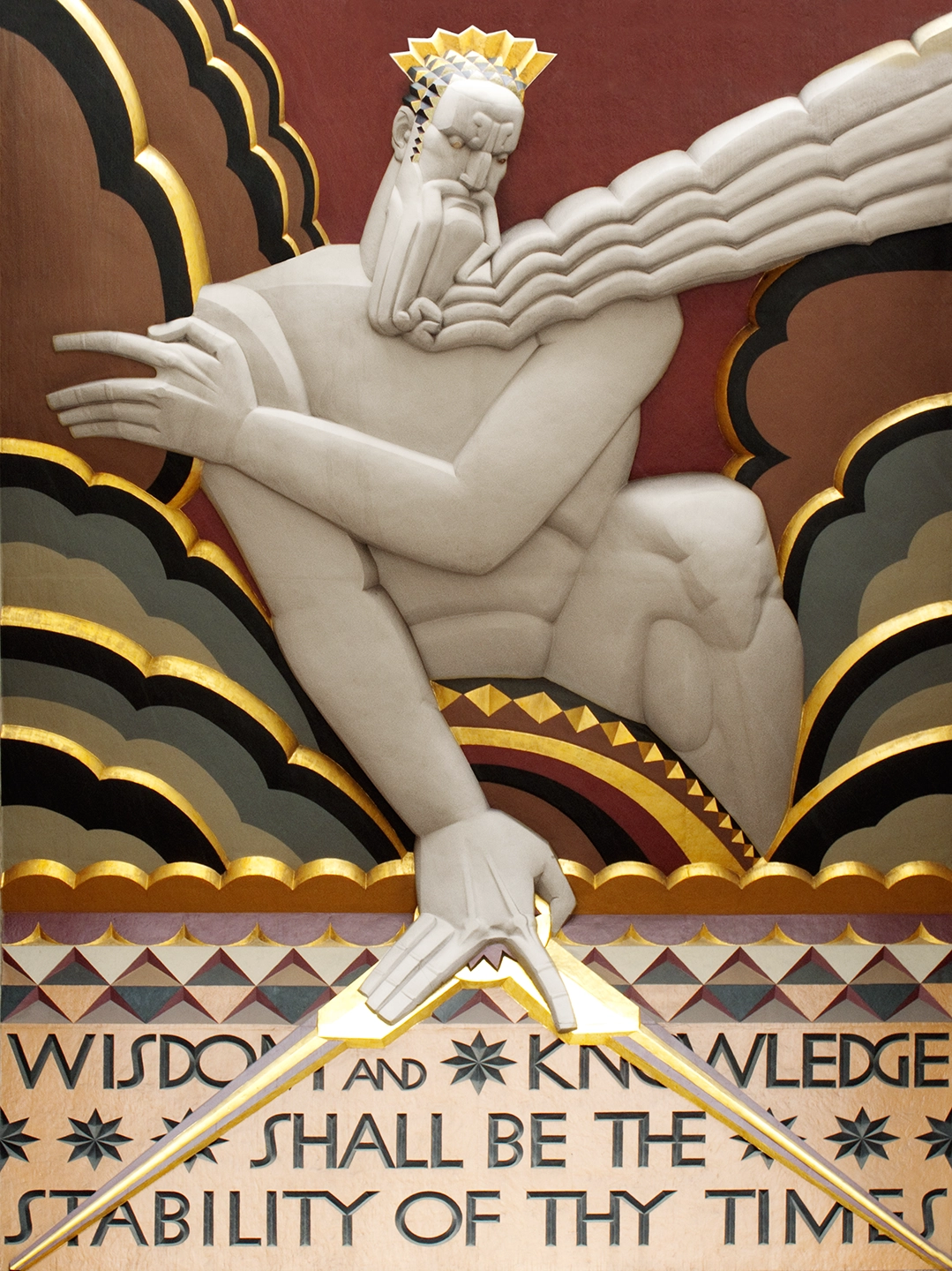
INTRODUCTION
Published October 28, 2021
Pre-Scriptum : this text was originally written in French.
Unfortunately, when it comes to semantics, etymology, and homophony, no
translation can effectively preserve the original meaning. To remedy this, and
to preserve the explicit content, I have decided to keep the original French
words and put their English translations in brackets.
First of all, I would like to clarify that
this is not an academic thesis, as many people might automatically assume.
According to the definition of the word « thesis » in the Larousse dictionary: « theoretical proposition, opinion, or
position on something, the truth of which is sought to be demonstrated »,
my work can bear this title without needing recognition from any system or
authority. It neither requires nor seeks such validation. Thus,
with complete and uncompromising freedom of thought and, above all, without
being answerable to anyone, we are free to explore all topics dear to our
polymathic enthusiasm from any perspective. Thanks to this state of mind, original ideas
have flourished, blossomed, and revealed themselves beyond the confines of the
plantation where our curiosity is often restricted. To be invigorated by such
openness is truly a blessing. I wish to share the rose of its quintessence with
you, unabashedly and wholeheartedly.
•••••
The genesis of this
thesis dates back to the moment when my eyes turned to the sky, or more
precisely, to the night I realized that the vault of stars was revolving
inexorably around a fixed point, like a wheel spinning around an axle. As I
marveled at this awe-inspiring spectacle, I could never have imagined that my
open-minded reflections on the workings of the cosmos would lead me to explore
a plethora of disciplines, bridging astronomy with the seemingly immutable
realms of mineralogy.
I first turned to
academic science and, despite compelling discoveries in certain fields, such as
quantum physics, I encountered many theories but very few theorems. Unlike a
theorem, a theory is grounded in speculation: it is a system of hypotheses that
seeks coherence with established principles, whether philosophical or
mathematical. In other words, a theory does not establish rules or laws that
are immutable in the real world. Surprisingly, this explicit distinction seems
to have eluded some members of the scientific community, those who continue to
mistake the smoke for the fire. Contemporary scientific dogma is, in fact,
rooted in complex theories that cannot be demonstrated outside the confines of
a mathematical language whose abstraction verges on increasingly surreal
horizons. This is especially true given that this language relies on a semantic
architecture where equations tend to feed upon, intertwine with, and reflect
one another in a closed loop. This process inevitably forms an artificial construct
upon which further structures are built, often without questioning the actual
solidity of its foundations.
Theoretical science
can thus be likened to the Tower of Pisa: a structure that holds together
admirably yet risks collapsing under the cumulative weight of its aberrations
each time another division is added. The intricate lines of glyphs showcased in
equations may impress the average person, but, as René Guénon
aptly noted, they remain far removed from the sensible reality they purport to
explain.
String theory stands
as perhaps the most striking example of how the synthetic complexity of
mathematics can diverge from the rationality of the biological environment.
This raises a critical question: why do we continue to devote so much time and
energy to studying abstract spaces that bear no reciprocal relationship to the
metrology of terrestrial life ?
Before turning their attention to realms
invisible to the naked eye – ranging from the infinitely large in astrophysics
to the infinitely small in particle physics – the scientific elite might gain
greater authenticity by devoting more time to reflecting on the manifestations
of natural laws with the seriousness they deserve. It is paradoxical that, at
the dawn of the 21st century, the physiognomy of life remains an enduring
mystery within a community that prides itself on understanding the origins of our
cosmos and continually expanding its boundaries. Perhaps it is time to take a
step back and focus on what is truly essential.
The causes (or perhaps the cause?) of life merit far more
attention than its effects. By attempting to dazzle us with conceptual
abstractions that lack any foundation in fact, academic prestidigitators
conceal their incompetence and their ignorance of the elementary principles of
observable reality. Instead, they subjugate their audience – students and science fiction enthusiasts alike – with an undeniably captivating display of smoke and
mirrors.
The day academics distance themselves from
a theoretical science that leads nowhere, the great mysteries of nature may
finally be reconsidered within their lecture halls. When that day arrives,
science will once again harmonize with the universal foundations of physics.
Research topics will be abundant.
We could begin, for instance, by
exploring the influence of lunar radiation on the vertical growth of plants or
investigating the analogous polarized relationship between the bronchi of a
lung and the branches of a tree (the former, sheltered from sunlight, inhales
oxygen and exhales carbon dioxide, while the latter, directly influenced by the
sun, absorbs carbon dioxide and releases oxygen).

At the beginning of
the 20th century, Nikola Tesla (1856-1943) – the visionary of
invisible physics – had already warned us about the mystifying excesses of
theoretical science (embodied in his time by Albert Einstein) in the American
newspaper The New York Times: « Einstein's work on relativity is a
magnificent mathematical garment that fascinates, dazzles and blinds people to
its underlying errors. The theory is like a beggar dressed in purple, whom
ignorant people mistake for a king... Its exponents are brilliant men, but they
are metaphysicians rather than scientists. »
Indeed, the case of
Albert Einstein is more than symptomatic of the intellectual morass in which we
find ourselves. By ‘borrowing’ the main lines of his theory of general
relativity from the French physicist Henri Poincaré (1854-1912), we don’t take much of a risk in asserting that the fame of the
multigenerational icon of science is more a matter of social engineering than
genuine genius. These lies don’t just affect the honesty and morality that are
the pillars of our society; they also affect the technology we use every day.
At a time when electromagnetic waves connect everyone on earth, the anachronism
between the engineering of a cell phone and that of a car’s gasoline engine,
whose basic technology is about one hundred and seventy years old, is more than
laughable and raises a question that should be seriously considered: Is it only
the ‘scientific’ work that the system is proud of that does not threaten its
hegemony and the prosperity of its economic model? It’s a question worth
investigating.
Beware! If you want
to graduate from a prestigious university and build a career, it’s best to
avoid certain subjects. Conducting your research outside the framework imposed
by conformism, especially when it challenges the theories of the indestructible
gods of the scientific pantheon, is a mistake not to be made. Today, despite
the obvious impasses, it is unthinkable to question the structural beliefs of
the scientific ‘church’: refusing to bow down before its idols would mean
excommunication, loss of credibility, and respectability.
Since I have nothing
to lose, gain, or even prove, it’s easier for me to be honest and point out the
frivolity of extraterrestrial physics when it comes to the primary interest of
this study: the revolutions of the stars above our heads. Although astrophysicists
are still light years away from revealing the underlying mechanics of these
revolutions, they still insist, rooted in the dogma of their upbringing, on
demonstrating this phenomenon through Isaac Newton’s (1642–1726) universal law of gravitation.
The equation of this
theory quantifies the parameters of the fall of an object towards the Earth and
provides a mathematical solution to explain the equilibrium between two
celestial bodies, but it does not specify the cause of their displacement,
which is, to say the least, regular. Since the former president of the Royal
Society made his pronouncement on the law of gravity, no member of the
establishment has attempted, with applied seriousness worthy of the scientific
method, to expand on the cause of the force of rotation (vectorized by f in the illustration below, where the orbit of the Moon around
the center of the Earth is taken as an example). This force, to use the current
nomenclature, is never taken into account; and that’s precisely where the
problem lies.
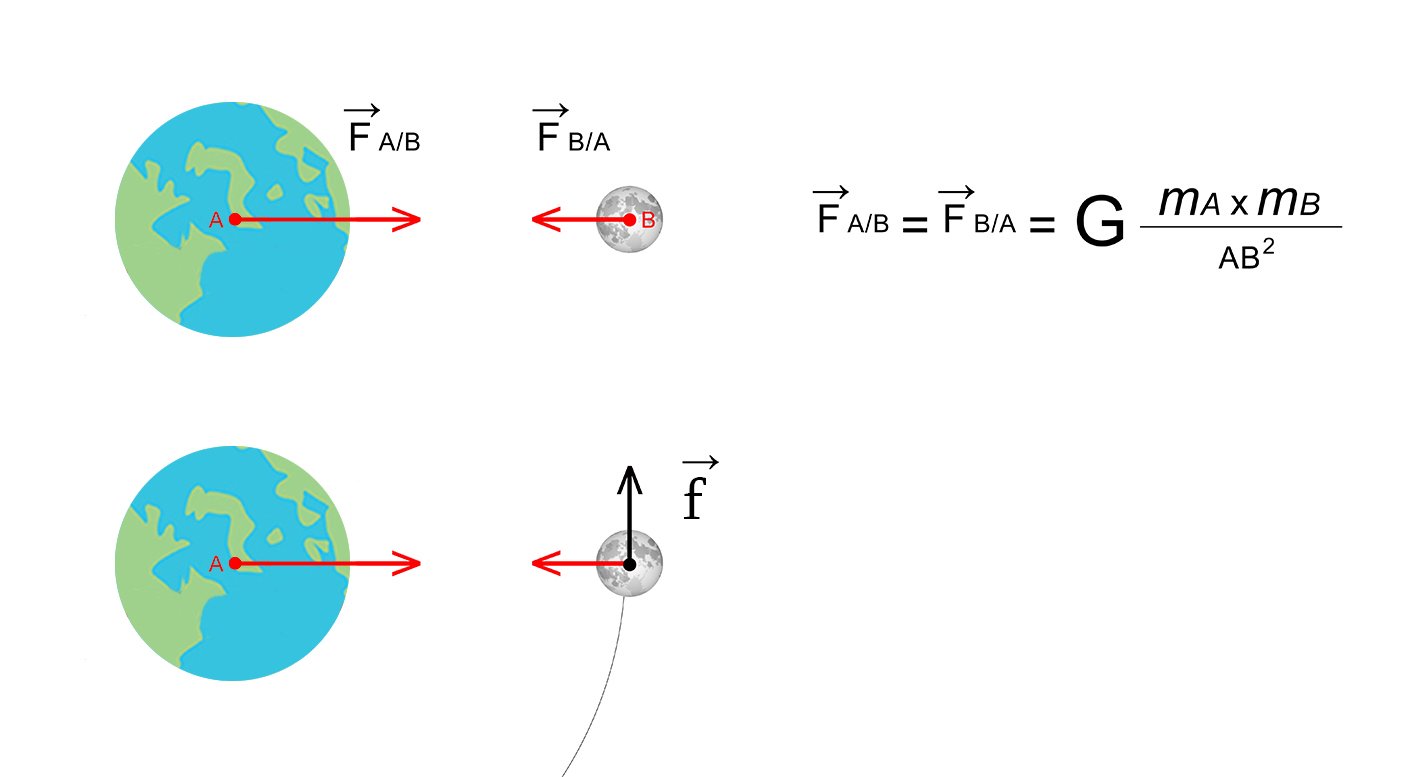
If no answer can be
formulated to the question of the origin of the force f, gravity cannot be validated as presented by contemporary
cosmology. And let’s not forget that no instrument can detect it, and no
scientist can reproduce its field in the laboratory. Of all the fundamental
interactions, and because it defies our understanding the most, this so-called
cohesive force remains one of the greatest mysteries in physics today.
Consequently, we shouldn’t be afraid to admit that the lack of scientific rigor
surrounding this concept is not reassuring for the quality of expertise and
weakens the pillars on which its reputation rests. Despite all this,
speculations, each more improbable than the last, continue to make their
presence felt on the scientific scene. In fact, we haven’t made a single step
forward since the theory of the curvature of space-time and the hypothetical
subatomic particles of the quantum world called ‘gravitons’.
Why not? Simply because the origin of this natural phenomenon remains
inscrutable to the science of our peers, who are content to explain that the
kinetics of the celestial bodies is the reminiscence of a hypothetical
explosion at the origin of our universe – the so-called ‘Big Bang’ – presented
to the world by the Jesuit Georges Lemaître at the
end of the 19th century.
In any case,
Newtonian gravity poses another problem: the unification of quantum mechanics
and general relativity. If gravity cannot be taken out of the equation, we must
recognize that theoretical physics is once again reaching the limits of its own
extravagance.
Once we accept the
fact that certain theories are currently taught as truths, it’s easier to see
that science has lost the core of its immanent beauty; the glorious hours that
made its reputation are behind it, and the torches that separated it from religion
now cast more than a faint light. Richard Feynman (1918-1988), winner of the 1965 Nobel Prize in Physics for his work in
developing quantum electrodynamics, had no problem admitting this: « Science
is the belief in the ignorance of experts. »
Even if the standard
model of astrophysics seems to be satisfied, our understanding of the universe
is still juvenile, inaccurate, and stitched with white threads. The human race
will never be able to emancipate itself from its cosmic Stone Age if we insist
on building ever higher on the foundations of a ‘science’ that has demonstrated
its limitations and that is more the stuff of fantastic theory than empirical
theorem. It’s a fact that science has sunk into doctrinal systems from which it
is difficult to exorcise. And the academic guardrails, in their vanity, never
miss an opportunity to ridicule anything that doesn’t fall within their realm
of possibility. Such a mentality will never be able to initiate the paradigm
shift that the scientific world needs to evolve. On the day that our approach
merges with the principles at the source of creation, perhaps nature will once
again reveal to us the gears used by the architect of her masterful clock.
Despite this
consensus, annoying as it may be, we should not fall into the trap of extremism
and dismiss all theories out of hand; some are worthy of interest because they
come not from mathematics but from pure intelligence. We are thinking in
particular of the somewhat obscure concepts of dark energy and dark matter,
which set the scientific community abuzz after Edwin Hubble’s observations in
1929. Since then, many astrophysicists believe that the expansion of our
universe is linked to a dynamic phenomenon that is invisible and intrinsic to
space. Previously thought to be 96% (6)
empty, this space would not be empty at all. It would be filled with an
energetic substance indescribable to our tangible world, yet interacting with
it. The vacuum would therefore be full of a more or less dense kinetic essence
that nobody can explain, measure, or reproduce at the moment. So, it’s not
impossible that behind the world accessible to the human senses lies a
continuum about which we know nothing. And it’s not David Bohm (1917-1992), one of the fathers of quantum physics, who will bring us the
contradiction, because he declared: « Space is not empty, it's full. The
universe is not separate from this cosmic sea of dark energy ».
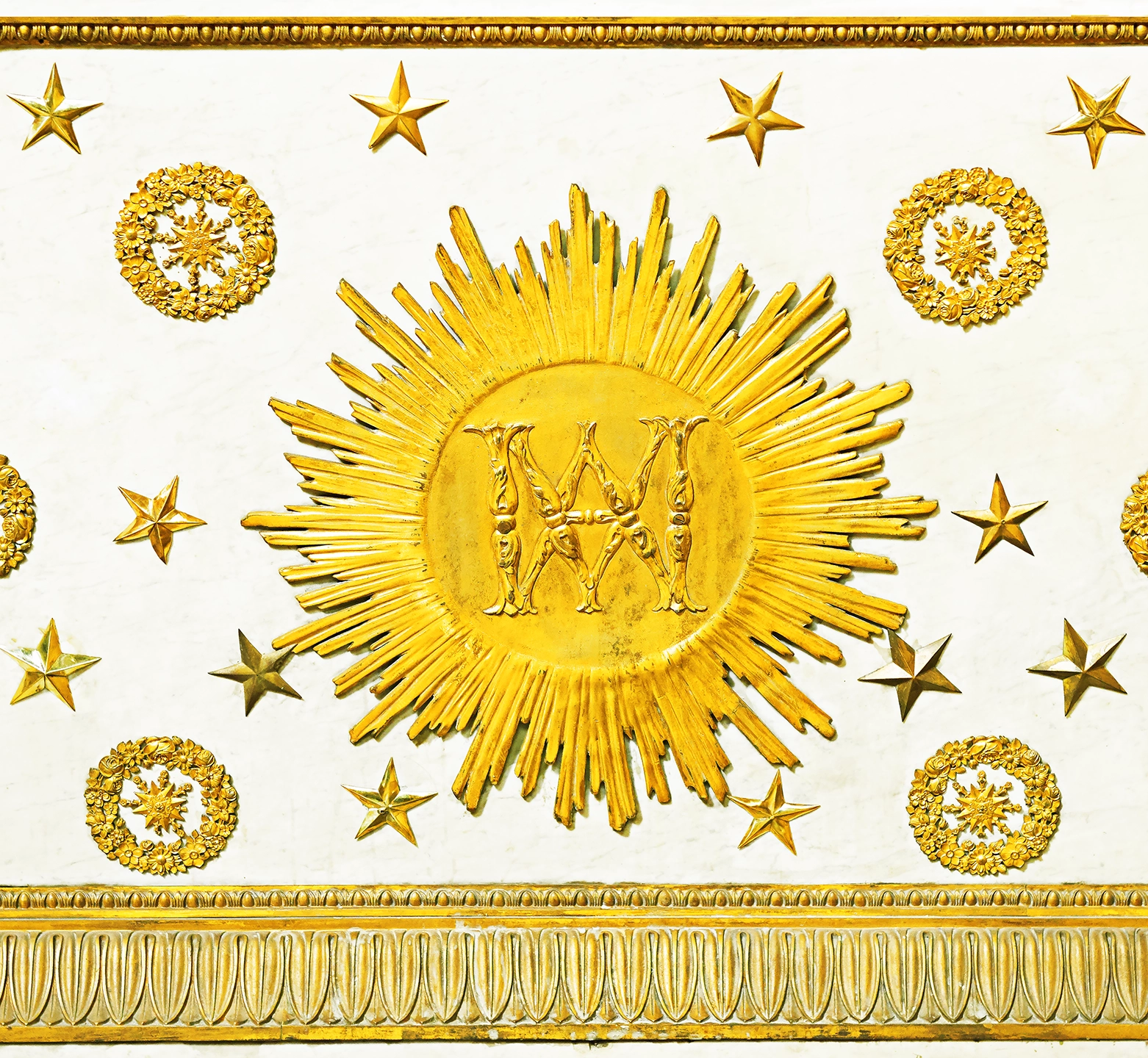
As far as academic
cosmology is concerned, many fundamental questions about celestial mechanics
remain unanswered. Here, in my opinion, are the most pertinent:
•
What makes the Earth rotate ?
•
What makes the Earth orbit around
the Sun ?
•
What makes the solar system orbit
around the center of the galaxy ?
•
Why do the planets orbit the Sun
on a common plane ?
•
Why do the planets revolve around
themselves ?
•
Why is it possible to predict the
motion and position of the wandering stars over time with such great accuracy ?
•
Why are the Earth, the Sun, and
all the planets spherical ?
•
According to the empirical law of
action-reaction physics, what kind of energy is consumed in the motion of celestial
bodies ?
•
Is it possible that the circular
motion of our stars is a reaction to the action of the mysterious dark energy ?
•
Could the mysteries surrounding
the mechanics of universal gravity be the observable effects of an invisible
cause within dark energy ?
In fact, I believe
that the answers to these questions lie at the heart of this abstraction of the
material world known as ‘dark energy’. But knowing that this space is
invisible, unknown, and unexplored, how can we grasp it from the material world?
If modern science has reached its limits, where can we turn?
•••••
At the age of 30 (3), I got my hands on a book entitled « Le mystère des cathédrales, esoteric
Intrepretation of the Hermetic Symbols of The Great
Work, written by Fulcanelli, the famous French Adept.
This book, a classic and indispensable reference on alchemy, gave me the keys I
was looking for to unlock the doors to the metaphysical realm of dark energy: it
was the spark that lit the fuse.
However, these keys
were preciously guarded behind the smokescreen of a ‘pictorial’ cryptographic
language called « cabale ». Strangely enough,
the mysterious essence of this Art captivated my mind from the very first
paragraphs written by the master. Despite my inability to fully grasp its
fragrance, its vibration was not foreign to me; its aroma resonated in a very
significant way, naturally and intuitively, within my innermost being since my
earliest childhood, without knowing that this axiom existed outside the
understanding of my secret garden. The best way to enlighten you is to define «
cabale » (from the Latin « cabbalus ») in the words of an author whose name my
notes have forgotten: « It's a language of hieroglyphic type theta
plays on all the registers of expression: images, words, letters, numbers,
sounds, colors, shapes, weights, etc....
It also uses secret conventions, the most widespread of which are
metaphor and emblematic rebus. It does not have a specific form and depends
only on the culture and imagination of those who use it. »
Today, unfortunately,
the only « kabbale
» known to the atrophy of Western culture and speculative masonry
appeared in the rabbinical tradition in Spain in the 13th century, through the
Zohar – Book of Splendor. Contrary to the proselytizing consensus, « kabbale » or «
kabbalah », or even « qabbalah »
to serve a more effective mystification, is not an original, isolated, and
predominant trend, but the simple reflection that Jewish mysticism gives to an
ancestral tradition that preceded it. In fact, the word « kabbale » is not of Hebrew origin,
since its etymology comes from the Greek «
kabbalès ». Therefore, in order to avoid the
trap of homophony, to counter the nonsense of popular culture, and to assert
the universality of its affiliation, scholars prefer to use the term « Hermetic Cabale », in honor of Hermes, the
mythological Greek figure.
In any case, whether « cabbalus
» in Latin or « kabbalès » in Greek, these terms both define the animal that has been the
emblem of knowledge since antiquity: the horse. The semantic relationship
between « cabaliste » (cabalist) et « cavalier » (horseman) becomes clearer, more coherent, and more justified in the light
of the initiatory tales written by Chrétien de Troyes since the first crusades
and the discovery of oriental folklore. From the height of the astronomical
sympathies, we share here on Earth, how can we fail to see the stories of the
Knights of the Round Table, King Arthur, and the search for the Holy Grail – the Cup of the Chalices – from a different angle than through the
Hermetic prism? It’s no coincidence that the Day of the Hero, always embodied
by a brave knight (the expression of the Donum Dei), is so emblematic of an
initiatory tradition that dates back to the dawn of time. It’s a fact, and we
will have the opportunity to prove it, that the Pegasus mount was already
ridden under the starry dome of the Chaldean-Egyptian priesthood.
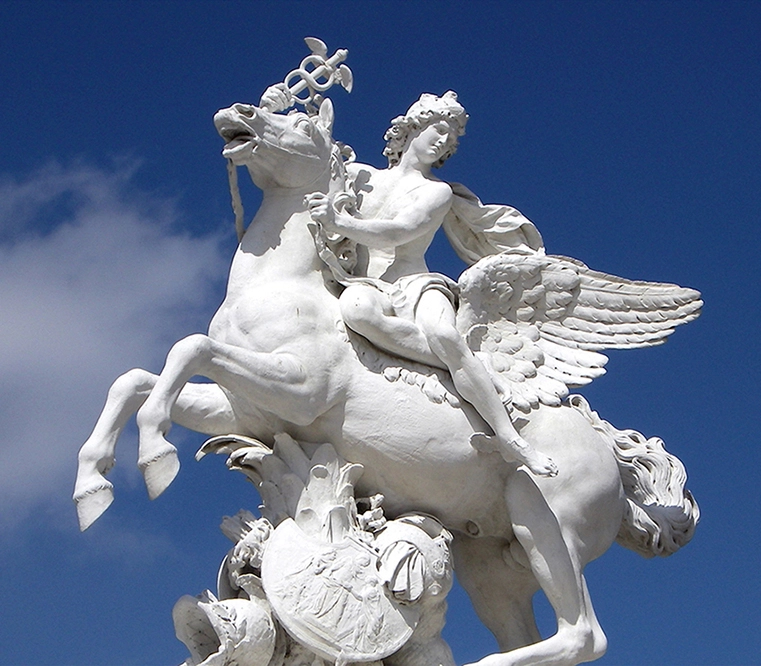
To understand how the
spirit of the Hermetic Cabal is articulated, let’s take a literary example
using the word « occult » (this choice is not insignificant,
as it helps to distance your thoughts from the association that vulgar culture
makes with demonic practices). The structure of this word breaks down into « o », « c » and « cult ».
For a Hermetist, the « o » represents the hieroglyphic sign for the Sun and the « c », in its curvature, for the
Moon; consequently, « occult » emphasizes
the cult of these two luminaries. From an operational point of view, this
reading corresponds to the definition given by the Larousse dictionary: «
That which acts, or which is done in a secret way, whose aims remain unknown,
hidden: an occult influence ».
Before the
universality of the Hermetic Cabal was overshadowed by the Qabbalah
and L’école des Beaux-Arts feigned
amnesia, all Artists (worthy of this capital letter) used it in their works to
perfect beauty under its best arcana until the end of the 10th century. When I
fully realized that these aesthetes were using their creation as an initiatory
canvas, my feet didn’t touch the ground for a few days, and my excitement
bordered on enlightenment. Indeed, the importance of such a practice in my
relationship with art, both for the interpretation of the concept and for the
exegesis of culture in general, was a revelation without precedent in my life,
for I could never have imagined that the natural predisposition to find
analogies between things that a priori had none would one day prove to be one
of my greatest assets in my quest for the absolute. What I had always
considered a curse, a psychological pathology, now seemed like a gift to be
exploited. A sign had just been sent to me, and I took its message with the
utmost consideration: Hermeticism embodied me.
The facetiousness that surrounds destiny is
decidedly more than romantic, for the path of this tradition had the potential
to become an inexhaustible source of inspiration and to channel my most
metaphysical thoughts. I knew then, without a shadow of a doubt, that the doors
to this mysterious kingdom of the invisible were no longer sealed forever. At
the dawn of my 33rd (6) birthday, I turned from the sublunary world toward the rising
sun.
•••••
Before continuing, it
seems important to open a brief parenthesis in order to explain why Hermetic
Philosophy and its operative applications – alchemy, magic, and astrology – are
no longer respected and valued as they were by the science of our ancestors.
Certainly, the mere
mention of one of them is enough to provoke a snigger from our contemporaries.
This mentality, as contemptuous as it is, was supported by a current of thought
born in the 18th century that dared to hijack the meaning and use of the word « Philosophy ». Let’s be clear on
this point: authentic Philosophy has nothing in common with the ‘philosophy’ of
the Age of Enlightenment; the sociological, humanistic, and naturalistic
speculations of the latter were never the salvific interests of ancient
philosophers such as Zarathustra (6th century
B.C.), Plato (427-348 B.C.), or Confucius (551-479 B.C.). Certainly, the search
for spirituality, wisdom, and truth was not of the same purity among the
editors of the Encyclopédie and their Germanic counterparts.
Moreover, why not
call its intellectual current « la philosophie de la Lumière » (« the philosophy of the Light ») instead of « la philosophie des lumières » (« the philosophy of lights » which is the true translation of « the philosophy of enlightenment ») ? The pluralization of the word « light » is a diabolical attempt to fragment what cannot be fragmented.
Through this seemingly harmless manipulation, truth no longer exists as such
but becomes falsely multiple and variable, depending on one's orientation.
Above all, let's not
be dazzled by the worldly pretensions of a certain bourgeoisie. Let's not lose
sight of the fact that the true definition of Philosophy, in its etymological
excellence, is the love of wisdom. Pythagoras (6th
century B.C.) said:
« I am a philosopher, not one who claims to possess wisdom, but one who
aspires to it. » Ascribing a new architecture to words, in order to divert
the power of their egregores, is one of the perversions that have been used and
financed by a domineering ‘elite’ to consolidate its power by destroying the
traditional heritage of our past.
Under the
revolutionary impulse of the Age of Enlightenment, which our history books
wrongly attribute to the people, society fell into an unbridled and deadly
obscurantism. Everything associated with the beliefs of the previous culture
had to disappear, fade away, be forgotten, and as a symbol, our majestic
cathedrals were sacked and desecrated.

The Jacobin
mentality, perfected through deceptive initiations that absorbed upstarts of
all kinds, dealt the final blow with the humiliating idea that man could now be
considered equal to God. This kind of teaching is blasphemy according to 1
Corinthians 6:19: « Do you not know that your bodies are temples of the Holy
Spirit, who is in you, whom you have received from God? You are not your own. »
From then on, the Gnostic doctrine of divine transcendence had no place in
the temple. And the operative was cunningly replaced by the speculative: why
bother to look at the sky and its planisphere of stars, since in the eyes of
these merchants, who never really left the temple, there is no truth outside
that of the all-seeing eye?
Since the advent of
illuminism – materialistic, naturalistic, and nominalistic
– anything that cannot be demonstrated, qualified, or measured no longer
exists. Like St. Thomas, encyclopedic science now believes only what it sees,
and Hermetic teachings have been relegated to the shelves of superstition. And
let's face it, this triumphant rationalism is at the root of the immobility,
conformism, and rationalism of today's scientific community. René Guénon explained: « Rationalism is essentially defined
by the belief in the supremacy of reason, proclaimed as a true dogma, which
implies the negation of pure intellectual intuition, which logically leads to
the exclusion of all true metaphysical knowledge. »
With the parenthesis
closed, let's return to a more vertical approach to our considerations.
•••••
Since societies are
only initiatory in name, the only way to find the grace you are looking for is
to help yourself. The first step is to assimilate the secrets of Hermetic
Philosophy, and within this, the study of its texts is inevitable. For an
occultist, this is no easy task, as this literature is full of pretenses. If
you didn’t know that the initiates, with the help of the Hermetic Cabale,
always veiled their writings to keep the envious away, their grimoires would be
useless. Many aspirants were thus led astray. Michel Sendivogius,
the famous 17th century alchemist better known as the Cosmopolitan, warned us: «
If Hermes, the father of the philosophers, were to rise today, along with the
subtle Geber and the profound Raymond Lulle, they would not be considered
philosophers by our vulgar chymists, who would hardly
deign to include them among their disciples because they would not know how to
proceed with all those distillations, circulations, calcinations, and
innumerable other operations that our vulgar chymists
have invented because they have misunderstood the allegorical writings of these
philosophers. »
Moreover, after the
tsunami of Illuminism between the 18th and 19th centuries, false prophets took
the liberty of ‘enriching’ the legacy of Hermes with texts of their own
imagination in order to captivate and manipulate their audience. Knowing that
these deceptions must be circumvented, the essence of our exegesis must
therefore focus on the texts of the Eastern tradition, translated into Greek
since the conquests of Alexander the Great in the 4th century BC.
When the Macedonian
conquered Egypt and installed one of his generals as the new Pharaoh (« Pharaoh
» is a term of Greek origin
that translates as « he who carries the sun »), the horizon of this ancestral land was revived by the
luminous flame of a new lighthouse. Most of the time, the annexation of a land
sounds the death knell for the local culture, but this was not the case with
the Ptolemaic pharaohs. Instead of destroying the land to impose their vision,
the new rulers restored the land to its former glory. Inspired by Aristotelian
philosophy, Greco-Hellenistic culture blended with the teachings of the
Egyptian mystery schools and the ancient traditions of the Mesopotamian world.
Whether it came from one of the first Persian prophets, in the person of
Zarathustra (whose name means « the golden star » or « the splendor of the sun
»), or from the temples on the banks of the Nile, the initiatory teachings of
the priestly castes received by the Greeks were certainly not new, as it is
often repeated that Plato (428-347 B.C.) and Pythagoras (570-495 B.C.) had already benefited greatly from them in their time.
The city of
Alexandria – so renamed after its conqueror – became a popular meeting place
for Hermetic occultists from all over the Mediterranean basin. In this
prodigious and marvelous hotbed of scholars, scientists, and magicians, the Gnose (« Gnosis » translates from
Greek as « knowledge » and derives from the desire to know God and His secrets)
was incredibly magnified. But, unfortunately for the salvation of humanity,
most of the manuscripts produced during this spiritual effervescence seem to
have perished in the flames of the memorable library. This ultimate barbarism
against the heritage of our historical peers not only signaled a change in
mentality but also marked the entry of our civilization under the temporal yoke
of the Roman hegemon for millennia to come.
Even if the power of
Rome is not as visible as it once was, you can be sure that its influence has
endured through the ages. After conquering its lands with the sword, the
Catholic Church – the direct heir of the Roman Empire – went on to conquer
souls with the crucifix.
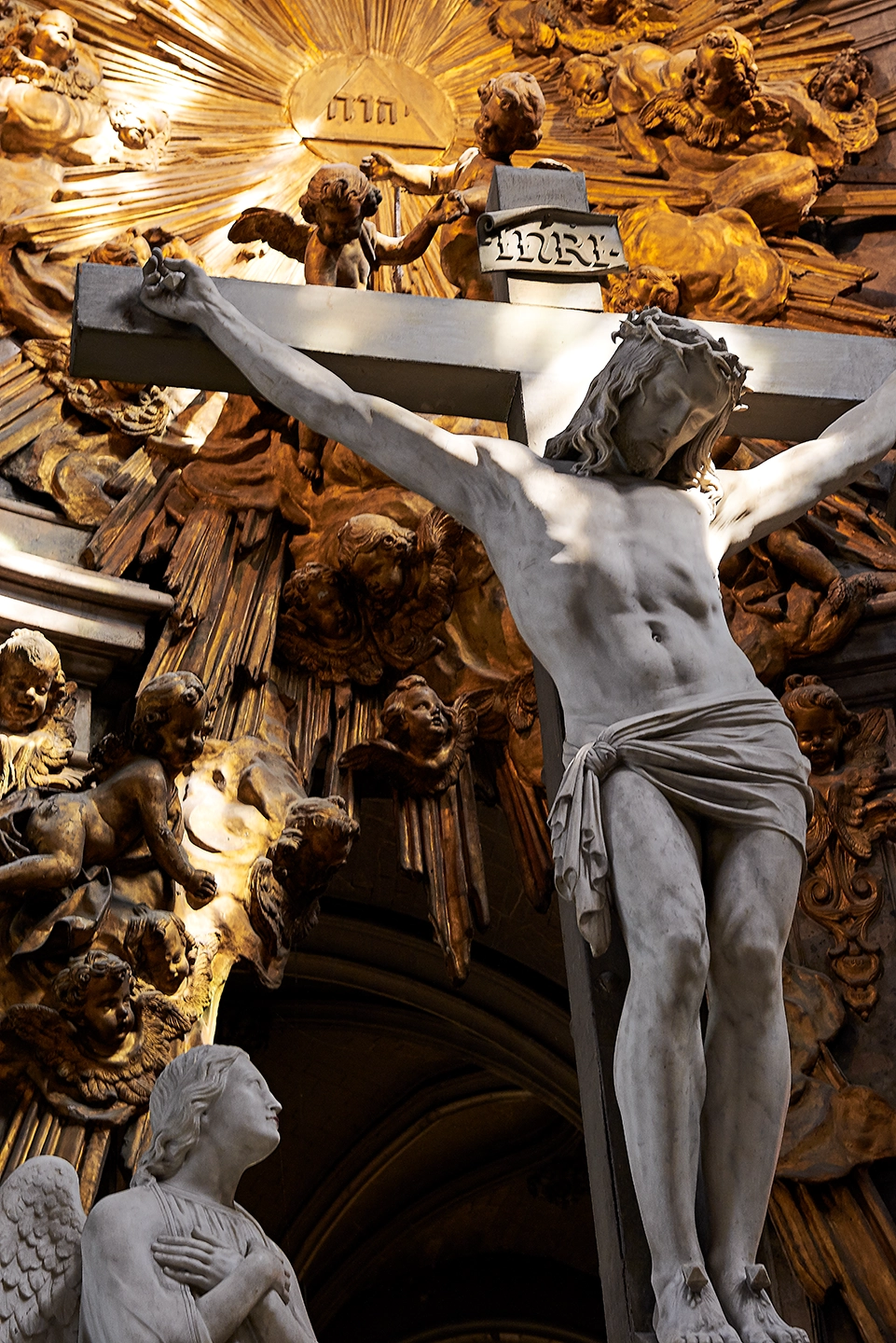
Fortunately for
tradition, 17 manuscripts of Egyptian Philosophy from the Ptolemaic era
resurfaced under the translations of Marsilio Ficino (1433-1499) – the inescapable luminary of the Italian Renaissance.
Collected under the name Corpus Hermeticum,
these texts are considered the founding texts of Hermeticism. On the path of
the sages, their radiant Philosophy acts as a natural prism, breaking down the
Light of divine revelation into the following themes:
•
Order of the Cosmos
•
Unity (Omniscience, Omnipotence and Omnipresence of
God)
•
The Sun
•
The Demiurge
•
Cohesion of the spheres
•
Fusion of opposites and polarity
•
The visible and the invisible
•
Truth and illusion of our reality
•
Creation through the circular motion of unity
•
Noos and the creative will
•
Time, space and matter
•
Body, soul and mind
•
The good, the beautiful, the right and the just
•
Vices and Virtues
•
Creation as Art and the concept of harmony
•
The Ogdoad
•
Intelligence and its relation to the God-Man
•
The 12/10 (or 6/5) ratio
•
The Zodiac and Astrology
Obviously, the
inclusion of astrology in this list might be surprising, but despite its
current fate, the magi have always considered it the cornerstone of all the
sciences of antiquity. Along with magic and alchemy, this esotericism brings
together, under the heading of theurgy, the 3 operative paths of
Hermetic philosophy. They form a harmonious whole, inseparable from each other.
Therefore, it is unlikely that an alchemist could define themselves as such
without having been initiated into the magisteria
of the other two disciplines
The importance of
this trinity was well understood by the Greeks, as suggested by the name of the
god associated with the father of the Philosophers, the aptly named Hermes
Trismegistus. In fact, in addition to the generally accepted translation of
« Trismegistus » as « the 3 times very great », we
can, thanks to phonetics, hypothesize another level of reading: « the 3
magisteria ». Although the Trinitarian doctrine of
unity has passed through time via the Pantheon of the Greek world, its
historical origin is truly Egyptian. The splendor of this testament is echoed
on the Giza Plateau, where the 3 Pyramids remind the
contemplative mind that the Divine Trinity is timeless, immortal, and
indestructible. How can we fail to be overwhelmed by the majesty, grandeur, and
genius of the civilization that built them? The geometric, astronomical, and
energetic properties implicit in these volumes reveal to all eyes – especially
to those who know how to see beyond appearances – the beauty of a way of
thinking that ours has never equaled.
The legacy of this
intelligence from the mists of time is also embodied in the attributes of the
Egyptian messenger of the gods, Djehuty-Thot,
whose tradition has always drawn comparisons to Hermes-Trismegistus. The
late Jean Phaure (1928-2002) described Djehuty-Thot as follows: « He is the
scribe of the divine Ennead, the brush with which the God of the Universe
writes, the creator of languages, the great magician of the spheres who
presides over primordial creation, bringing the world into existence through
speech, alongside Ptah. Above all, he is the one who oversees the order of the
world, the great calculator, the master of the cycles of time. »
It’s important to note that in the
Egyptian theogony, Djehuty-Thot was not
considered a god in the strict sense of the word, but rather a neter (phonetically similar to « nature »); in other
words, the anthropomorphizing of a Force, an action of divine immanence in the
manifested world, a kind of hypostasis or æon,
as the Gnostics liked to define it. We can no longer be so charitable as to
offer you the key that unlocks access to the 12 (3) verses of the Emerald
Tablet (Tabula Smaragdina in Latin or Lawḥ al-zumurrudh
in Arabic), on which the entire firmament of Hermetic Philosophy is
synthesized.
All occultists,
lulled by the history of religions, have fallen in love with these writings
engraved on an emerald – a green gemstone. Depending on the culture or period,
the most literate among them produced a multitude of translations, more or less
faithful to the first version written in Arabic in the 9th century: the
Appendix to the Book of the Secret of Creation (Kitâb
sirr al-Halîka). From
the perspective of tradition, the Arabic affiliation is not without
significance, as the descendants of the Persians expelled the Byzantines from
Alexandria in the 7th century and became, by force of circumstance, the active
vectors of the transmission of the initiation.
Personally, I prefer Hortulain's 14th century translation of the Latin Vulgate :
I.
It is true without lying,
certain and very true
II.
What is below, is what is
above: and what is above, is what is below, to work the miracles of one thing.
III.
And as all things have been,
and have come from one, through the
mediation of one: so all things have been born of this one thing, by adaptation.
IV.
The Sun is its father, the
Moon is its mother, the wind carries it in its womb; The earth is his nurse.
V.
The father of all the Telesme of everyone is here. His
Force or Power is whole,
VI.
If it is converted to land.
VII.
Thou shalt separate the
earth from the Fire, the subtle from the thick gently, with great industry.
VIII.
He ascends from earth to
heaven, and again he descends to earth, and he receives the Force of higher and lower things. Thou shalt have by this means
the glory of all; and for this all darkness will flee from you.
IX.
It is the strong force of all Force: for it will overcome every subtle
thing, and penetrate every solid thing.
X.
Thus, the world was created.
XI.
From this will come
admirable adaptations, the means of which is here.
XII.
That's why I was called
Hermes-Trismegistus, having the 3 parts of everyone's Philosophy. What I have
said of the operation of the Sun is
accomplished, & completed.
These verses have a
curious resonance with the prologue to St. John's Gospel, which is quoted below :
I.
In the beginning was the
Word (the Logos), and the Word was with God, and the Word was God
II.
The Word was with God in the
beginning.
III.
All things were created by
him, and apart from him not one thing was created that has been created.
IV.
In him was life, and the
life was the light of humanity;
V.
And The Light shines on
in the darkness, and the darkness did not overcome it.
VI.
A man came, sent from God,
whose name was John.
VII.
This one came for a witness,
in order that he could testify about The Light, so that all would
believe through him.
VIII.
hat one was not the light,
but came in order that he could testify about the light.
IX.
The Word was the
true Light, which enlightens every man by
coming into the world.
X.
He was in the world, through whom the world was made, but the
world did not recognize him.
Indeed, the
similarities between the two texts are more than striking. Consequently, the
scribes of the Catholic Church were likely inspired by the wisdom contained in
the breath of the Hermetic texts.
In the creation of
the ‘Holy Scriptures’, the plagiarism of earlier manuscripts by the Church
Fathers is confirmed in two ways. On the one hand, the Gospel of St. John bears
a striking resemblance to the Gnostic Gospels of Cerinthus, written in the
first century of the Christian era. On the other hand, the Apocalypse («
apocalypsis » translates from the Greek
as “revelation”), written by St. John, is a compilation of a number of sacred
texts, such as the Book of Enoch and the Book of Ezekiel.
In a sense, the
desire to incorporate ancient knowledge into the message of Christ's favorite
apostle, who in iconography is always adorned with a green mantle, indicates
that Catholicism was shaped on the basis of pre-existing pagan doctrines.
Moreover, let us not forget that before the invention of printing in the 15th
century, forging a manuscript was child's play, and the forgers, thirsting for
religious supremacy, carried out this practice with the success we know. For
example, when it comes to the Old Testament scriptures, all exegetes know that
the Ten Commandments supposedly given by God to Moses on Mount Sinai are
nothing more than a vulgar plagiarism of paragraph 1:125 of the Egyptian Book
of the Dead. Whether we like it or not, Judeo-Christian theology is a pale copy
of the Gnostic precepts of the neter with the
one green eye: Hor or Horus – the Egyptian light-bearer. There's
nothing new under the sun: even the Hebrews recycled what came before. This is
why the various biblical texts, the Pentateuch, and the canonical Gospels can
never be considered historical truths or incontrovertible theological
references.
In spite of all this, the sacred
literature, even if it has been modified, still contains initiatory treasures
that should be studied. The theosophical syncretism found in the texts of
different civilizations irrevocably suggests a common origin, a syncretism, a
kind of primordial tradition, as René Guénon liked to
define it.
Let's return to the verses of the Emerald Tablet.
•••••
The first thing that
strikes us in these verses is the totally innovative principle that a power («
the Word » in the Prologue of St. John) is linked to the creation of the world,
to the action of the sun (symbol of light) and to the mediation of unity. This
ancestral conception of the genesis of matter is uniquely close to the
statement made by Max Planck, winner of the Nobel Prize for Physics in 1919: «
All matter exists only because of a Force that makes the particles vibrate and
maintains this tiny solar system of the atom. Behind this force we must assume
the existence of a consciousness and an intelligent mind. This mind is the
matrix of all matter. » We cannot help but marvel at the knowledge
of the ancient initiates, who understood what 20th century man has only just
begun to discover. And make no mistake, it is indeed the existence of God that
this leading figure of the scientific community is suggesting. The reality of
inaccessible, indescribable, and incommensurable realms can no longer be
dismissed as the stuff of science fiction movies or the ravings of oriental
wisdom masters. It's true that my generation automatically thinks of the films
of George Lucas when the idea of a Force is mentioned. It's also true that no
one doubts Master Yoda's description of the Force to his young apprentice
similar to the tradition of the Magi: « My ally is the Force, and it's a
powerful ally. Life creates it, makes it grow; its energy surrounds and binds
us. We are luminous beings, not this brute matter. You must feel the Force
around you, between you, me, the tree, the rock, everywhere. » To master
the Force is, as you may have guessed, to attain the rank of Knight... After
long centuries of religious ineptitude, undogmatic science and popular culture
can finally be reconciled on the fertile ground of Gnostic clairvoyance.
Thanks to these
revelations about the power that equates creation with the will of an
intelligent consciousness or demiurge, the 12 (3) verses
of the Emerald Tablet direct everyone's consciousness towards the primacy and
accuracy of the vision of Hermes' disciples. While our peers limit themselves
to a science of effects: material, our ancestors already transcended the
intelligible world and focused directly on the cause of manifestation:
spiritual, existing beyond time and space.
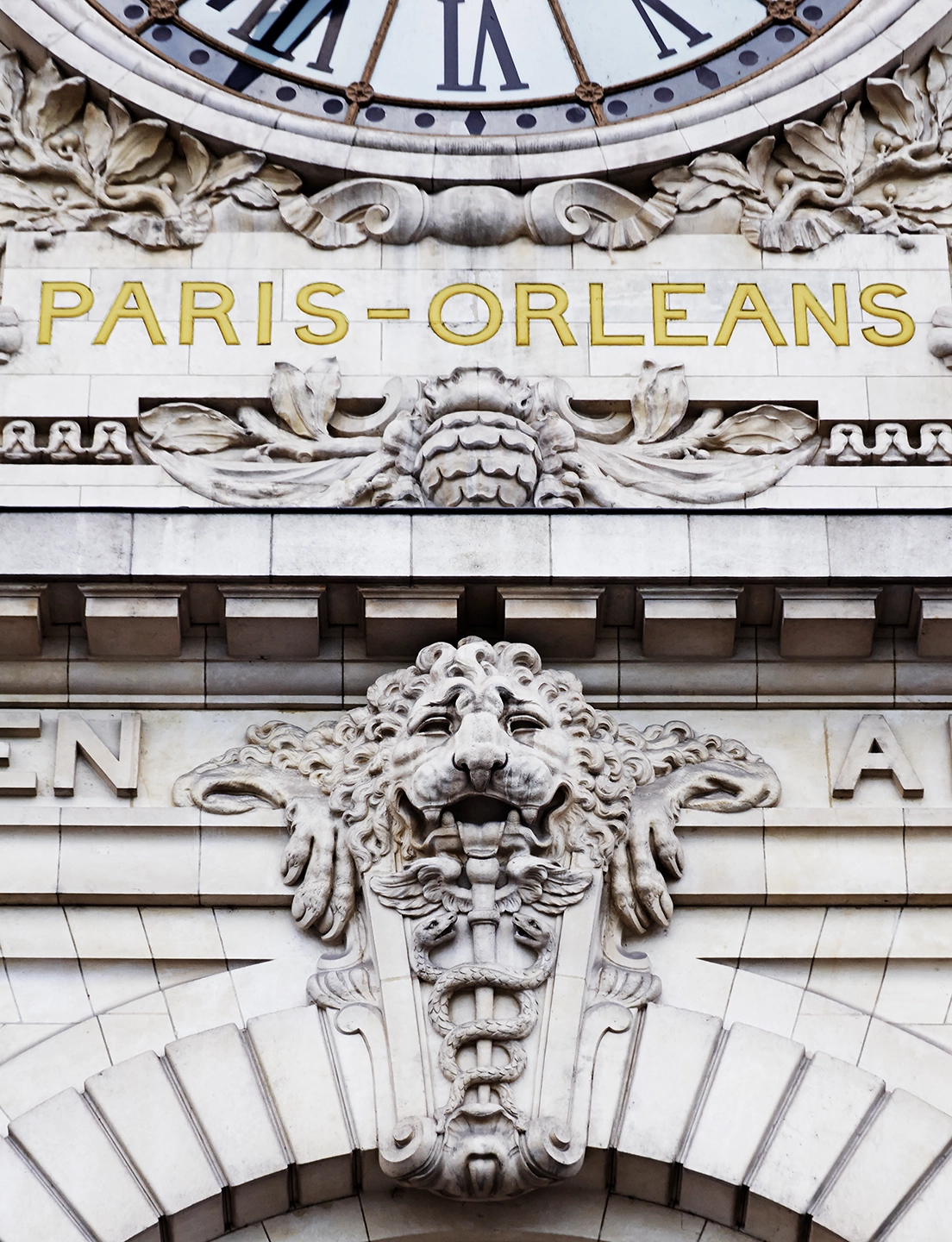
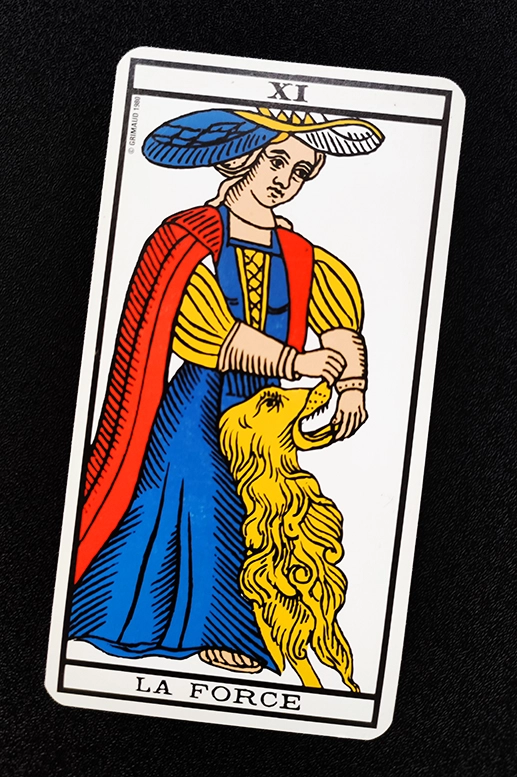
In Hermetic culture, initiates have always
compared the properties of the spiritual substance that precedes matter to that
of an ocean, because its waters fill the ‘void’ (« vidyā
(विद्या) » in Sanskrit means «
knowledge ») like water in any container. This ocean echoes the cosmic sea of
dark energy alluded to by David Bohm. Since the homophone of « mer » (« sea ») is also « mère » (« mother »),
derived from Latin « mater », we can weave interesting semantic links
between « mer » (« sea »), « mère » («
mother »), « mercure » (« mercury ») (the
Latin avatar of Hermes-Trismegistus), « matière » (« matter »), « matrice » (« matrix »), and « Marie » (« Mary »)
(where « Marie » is an anagram of « aimer », « to love » in english).
If this invisible matrix is at the origin
of all manifestation, the assumption that she is a virgin is self-evident, and
the emblem of the Black Virgin (black, in contrast to the synthesis of the 6
colors of the visible spectrum, expresses the absence of light), like that of
the Virgin Mary, becomes more explicit from the point of view of Theosophy. The
Blessed Virgin, the Queen Mother, « la mère divine » (« the divine sea
»), is the ordinary figuration of the Philosophers' mercury. Curiously, the
anagram for « énergie noire » (« black energy
») is « reine ignorée » («
ignored queen »), which reminds us of the parable in verse 1:5 of the biblical
poem, the Song of Songs, probably born of the love affair between King Solomon
and the Queen of Sheba: « I am black, but I am beautiful (…) ».
In his 12th century work, Livre secret traitant
de l'art caché et de La
Pierre Philosophale, the alchemist Artéphius described « l’eau des sages »
(« the
water of the wise ») as follows: « Oh, how precious and magnificent is this water!
Without it, the work could not be completed: thus it
is called the vessel of nature, the womb, the matrix, the receptacle of the
tincture, the earth and its nurse. It is the fountain in which the king and the
queen wash themselves, and the mother who must be placed and sealed on the womb
of her child, who is the Sun. »
Are you beginning to
understand how the cabalists have deliberately blurred the trail back to the
primordial ocean, using a deliberately convoluted lexical field to define a
single concept; in this case the uniqueness of matter –
the materia prima ?
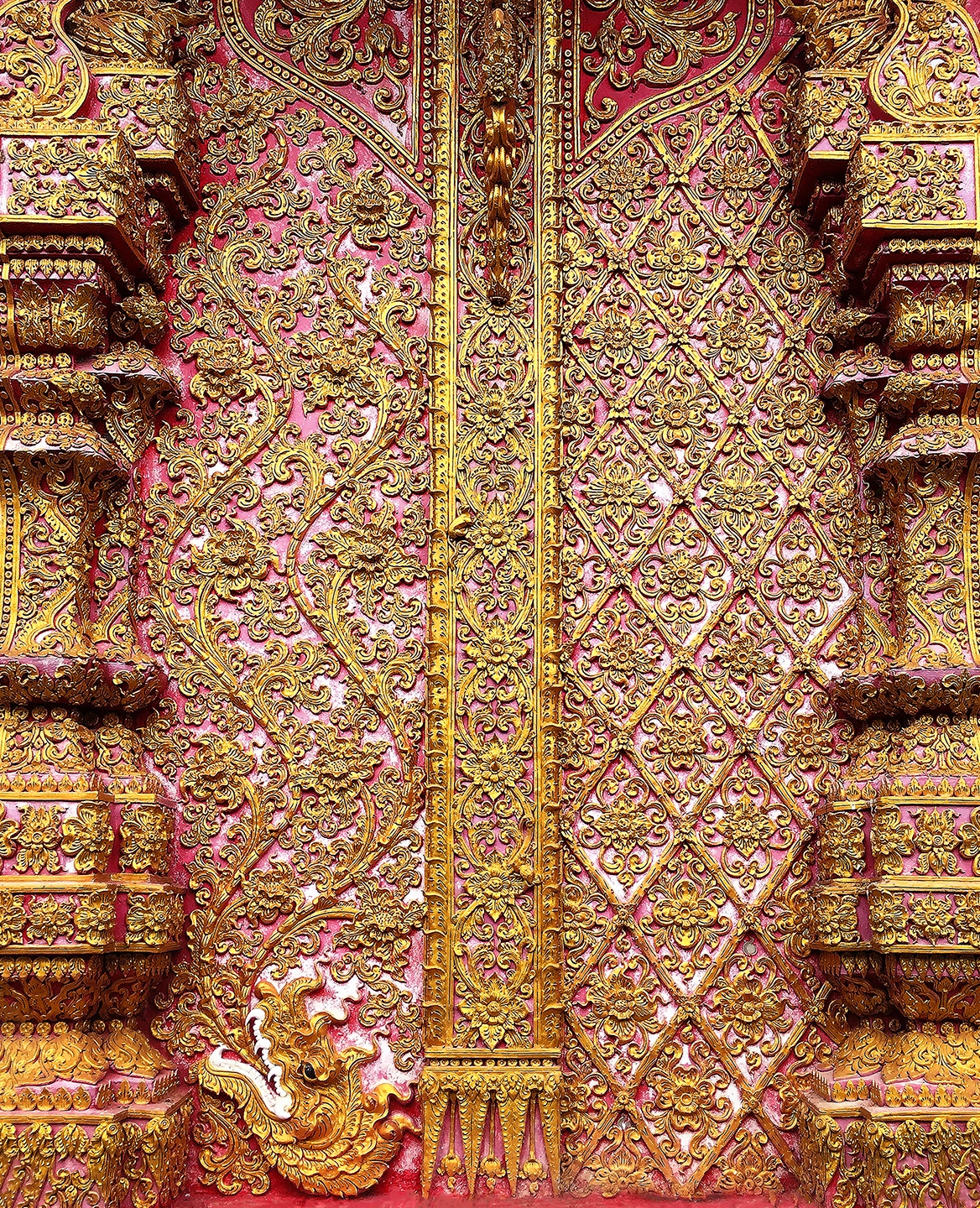
In the Corpus
Hermeticum, verse 16 of an excerpt from a
speech by Hermes to Tat states that « All that exists is in
motion; non-being alone is immovable. » Unity, the
preliminary state to divine manifestation, could then be imagined as energy in
the form of stationary waves, and when this energy is vectorized, the whole is
set in motion to create space, time and, consequently, matter. The universal
matrix is born from the rupture of the spatial equilibrium of unity: this first
impulse is the Strong Force of all forces, its Spiritus Mundi and its
Holy Spirit (« Saint-Esprit » in French). This is the passage from Ain Soph
to Ain Soph Aur
in the Tree of Life of the Hebrew Kabbalah
A skilled cabalist would break down the
word « saint » (« holy ») into 3 parts: « s », « ain » and « t ». The silent « t » is the outline of a
cross, expressing the center, « ain » is the
principle that precedes matter and defines « abyss » and
« non-existence » in Hebrew, and « un » (« one ») is the
number of unity, while « s » is the letter of
manifestation, because it undulates like the graphic representation of a pulse.
In other words, the saint is a person whose vibratory signature resonates with
the first impulse that emanates from the center of unity. That's why a saint's
soul – his or her spirit – will always be as close as possible to the resonance
of the divine unity.
The different states of matter could then
be compared to the rungs of a ladder, on which the matrix Force gradually
crystallizes, or condenses, into more or less regular forms. This is supported
by the best definition of alchemy you will find by Fulcanelli:
« Alchemy is the permutation of the form by Light, Fire or Spirit ».
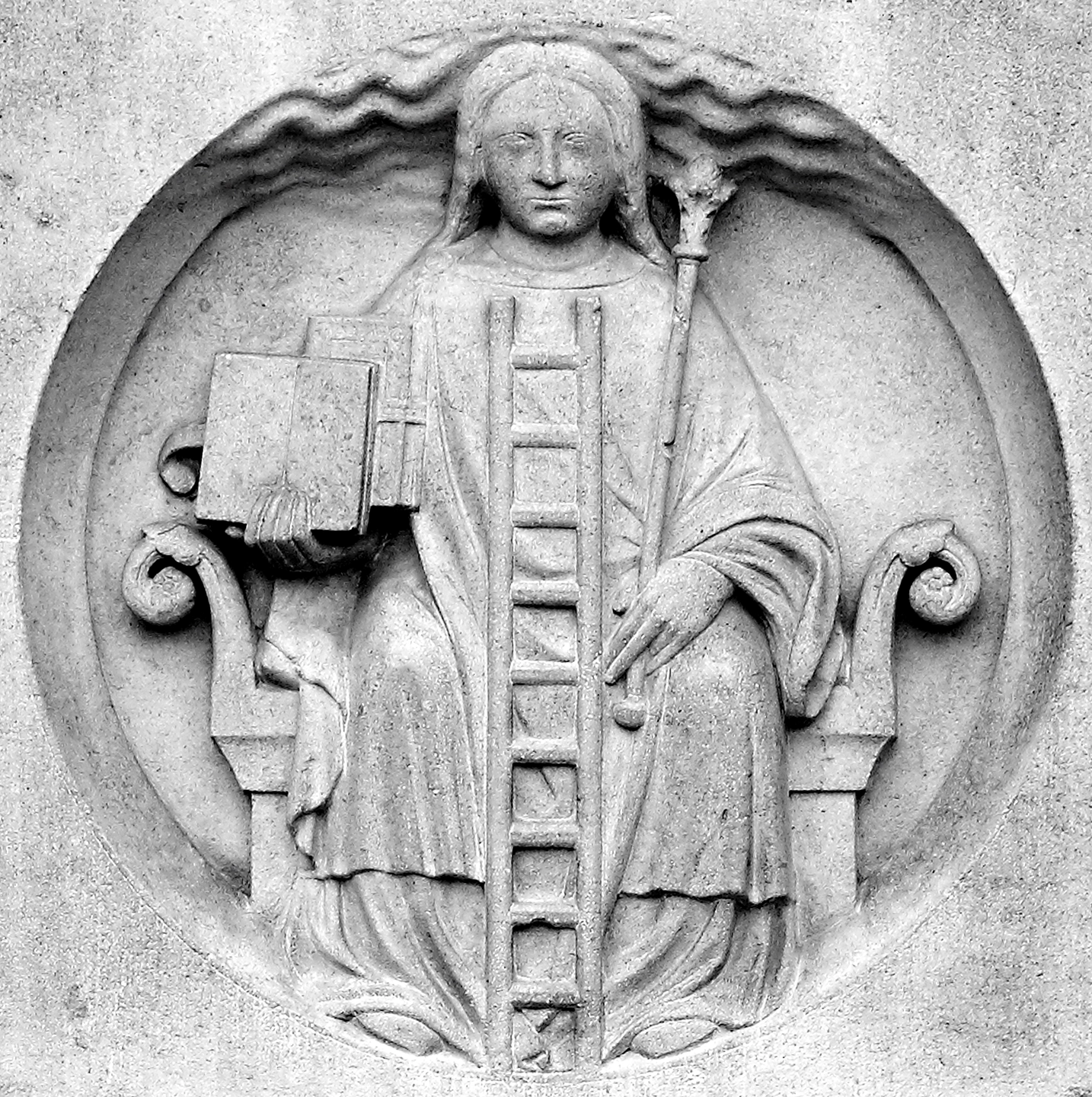
Even if, according to
the testimony of Irénée Philalèthe (1628-1665), the
transmutation of metals seems to be a reality, making gold to enrich oneself
has never been the ultimate goal of alchemy. Again, many have gone astray by
not understanding the cabalistic writings of our elders. To separate the pure
from the impure is to go from vile matter to rectified matter. As the molecular
arrangements become simpler and more orderly, matter and the matrix Source
gradually tend toward reunification, toward unity. Matter is purified in a
process that reverses the Luciferian fall (« Lucifer » is « Lightbearer » in Latin; it first appears in Greek
mythology, where he is the guardian of the horses of the sun god Apollo), hence
the Nietzschean concept of eternal return. The famous immortality about which
dreamers fantasize so much is perhaps, in the end, nothing more than the search
for eternity, for the absolute immobility in which God rests, as close to unity
as possible. The realm of the science of the adepts is therefore, by
definition, outside of time and space.
Moreover, unlike
modern science, which deals exclusively with matter, alchemy, magic, and
astrology focus directly on the matrix and the invisible laws that animate it.
•
Astrology measures the energetic
variations of the celestial Fire.
•
Alchemy is the manifestation of
this Fire in organisms that are a priori inanimate (minerals and
plants).
•
Magic channels this Fire directly
into the body of the adept. The adept is a magician in the noblest sense of the
word, and has always had perfect mastery of this cosmic Fire, this Force, which
he channels through the chakras of his body, modulating and redirecting it
according to its intended use. Either for positive purposes, when God's love
fills his heart (white magic), or to sow division and destruction, when the
dark side (black magic) has definitely seduced him.

On the horizon of our
conclusions, it appears that the driving principle of all existence – the Force
underlying life – is generated by a matrix that originates outside the
boundaries of our reality. This conclusion seems to be shared by Niels Bohr,
winner of the Nobel Prize in Physics, who stated in 1922: « Everything we
call real is made of things that cannot be considered as real. » Since the
matrix Spirit is outside the sensible, measurable field, how is it possible to
perceive its substance in the world accessible to humans ?
•••••
In my opinion, if
this creative Force is the cause of tangible effects, then its signature must
be observable in nature. It’s possible to glimpse the mechanisms of this matrix
by adopting the mentality of an insatiably curious person – in other words, by
keeping our eyes wide open. It would be a serious mistake to specialize in one
field or another; the Philosopher of nature must open up the field of
possibilities to all scientific disciplines, from astronomy to mineralogy – in
other words, to all visible phenomena between heaven and earth. The imprint of
the Force must be present everywhere, and as the Emerald Tablet suggests, in
the infinitely large as well as the infinitely small. The task is to identify
the traces of this Force and then to find the analogies that connect them.
It was while working
on this task that the mathematician Leonardo Fibonacci, in the 13th century
A.D., noticed that an arithmetic sequence was linked to generation in the
biological world. In this progression, each new number is the sum of the
previous two, i.e., 0, 1, 1, 2, 3, 5, 8, 13, 21, 34, 55, 89, 144 (9)... and so on. As the numbers become larger, the ratio between one
number and the next tends to a mathematical constant with a value of
approximately 1.618. This ratio of proportion was defined by the father of
Greek geometry, Euclid, as the division in extreme and mean reason. This
relationship, which is undoubtedly the most explicit example found in the
phyllotaxis of the plant world, is repeated in all of nature's creations.

Spiral arrangements of this digital matrix
can be seen in flowers, romanesco cabbage, and pine
cones, as well as in nautilus and gastropod shells. These analogies are
astonishing because they are not limited to these few examples but find a
universal echo in the 3 kingdoms of the living world: mineral,
vegetable, and animal. Nature creates geometry automatically, without the need
for a square or compass. Nature doesn't need a plan; it is the plan. Its
architecture, especially when expressed in a helical (« helical » and « helix » have the same etymological root as Helios,
the Greek sun god) and logarithmic fashion, is simply dazzling. I never
understand why most of us remain stoic in the face of such beauty and elegance.
Don’t they have eyes to see ?
Today, the ratio
equal to 1.618 is better known as the « nombre
d’or » (« golden ratio »). Popularized by Matila Ghyka
in the 20th century, it is the result of a blend between semantics and
mysticism. The etymology « or » (« gold ») comes from « aor », « aour »,
« aur » or « our » in Semitic languages, and its
translation is « the Light ». When we recall the prologue of St. John's Gospel;
« The Word was God (...) The Word was the true Light », the correlation
between God, the Word, Light, and the golden ratio becomes more than obvious
for one of the Magi's modes of thinking: synonymic reasoning. If you were
looking for concrete proof of the existence of God, of the Creator, the golden
ratio would provide your argument with a factual dimension that would be
difficult to refute. All the more so since the Greek symbol for the golden
ratio, Φ, was used by early Christ
worshippers to define « the Force of God », « the Will » (« the Telesme» of the Emerald Table) or the principle of the
concentration of the Spirit in matter.
The signature of Φ can
also be seen in human anatomy. Among the many examples, the position of the
navel is the most significant. In fact, knowing that the word "nombril"
("navel") is the phonetic counterpart of « nombreel
», cabalists would break it down into « nombre
» (« nomber ») and « el ». El
is the name given to God by the ancient Semites, making this point, so special
to Vitruvian man, a physical revelation of the divine signature in the
proportions of the human body. On the one hand, it was from here that the
nourishing energy of the mother was breathed into us, and on the other – and
this is what interests us here – it divides the average distance between the
feet and the head by the golden ratio. Therefore, verse 1:27 of Genesis, which
states that «
man was created in the image of God », is not just a parable but must be taken literally, at the
first degree.
The Larousse dictionary explains: « Φ (phi) is the 21st letter
of the Greek alphabet (21 = 3 x 7), corresponding, in ancient Greek, to an
aspirated « p » and, in modern Greek, to an « f ». It is
transposed by « ph » in French words derived
from Greek. » The first syllable of the words « Philosophy », « physics
», « phyllotaxis », « firmament », « Force » and « Fire » underscores the close
relationship these words have with the golden ratio. Etymology is a science to
be treated with the utmost seriousness because, as you may have already
noticed, the keys to investigation offered by this tool are incomparable.
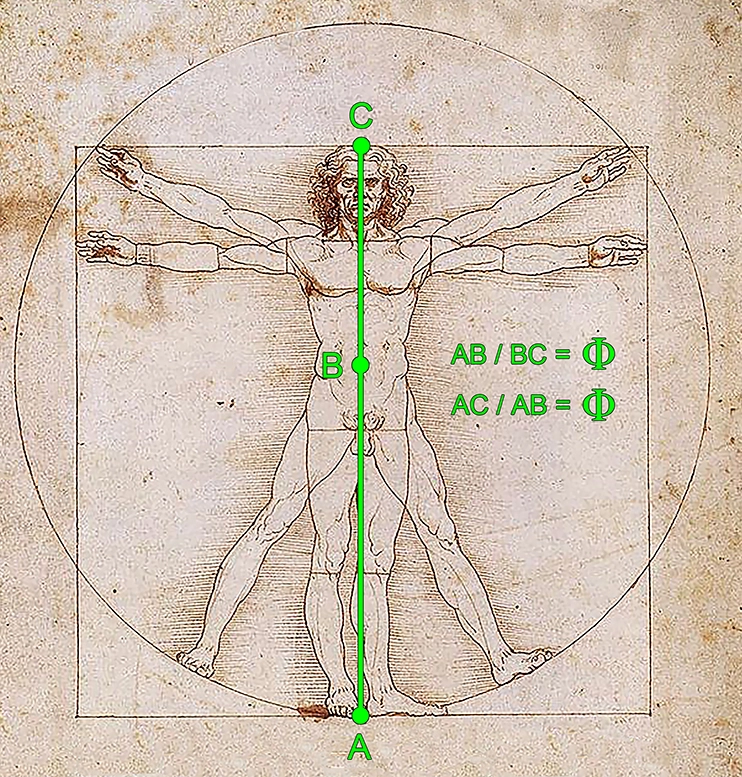
With all these connections, it hardly
seems presumptuous to me to assert that Φ, the true whirling fulcrum of universal harmony (to be
understood as « uni vers al
», « uni vers el » (« united toward el
») or « uni vert sel » («
united green salt »), i.e. « the green salt that unites » for a right-to-left
reading), is the organic imprint of a creative matrix, whose structure is
subject to the laws of geometry and arithmetic. Plato understood this very well
when he declared: «
God always makes geometry » and « Geometry draws the soul
toward truth, and forms the Philosophical Spirit, by forcing the soul to raise
its gaze upward, instead of lowering it. »
Historians tell us
that the golden ratio was called « phi » in honor of the sculptor
Phidias (480-430 B.C.), famous for his contribution to the construction of the
Pantheon in Athens, where the precious ratio is exalted in the proportions of
the facade. Should we be surprised to learn that the golden ratio was already
used five centuries before the Christian era by Greek architects, but also,
according to the work of René Adolphe Schwaller de Lubicz
(1887-1961), by their Egyptian counterparts? Absolutely not, because all
the artists worthy of this capital letter have always tried to make their works
resonate with this particular signature. In their desire to mimic (« singer
» in French, to be heard « saint G » (« holy G »), where G is
a graphic representation of the spiral), they attributed to Φ
the ultimate canon of beauty. Every time Φ is used, it's a syncretic
tribute to nature and the Creator. From the grandiose pyramids of Giza to the
abstract paintings of Kandinsky, Φ has always been the prerogative of artistic genius and the mark
of a symbiotic relationship with the universe. This form of expression was
certainly born out of necessity: to reveal and glorify in the material world
the invisible intelligence of divine creation.
•••••
Whether our
contemporaries like it or not, the art of the 20th century has nothing in
common with the ‘works’ of today, and the word « art » has become a catch-all term
for any kind of plastic creation. One only has to visit the galleries to
realize that art
has become an intellectual masquerade and a visual pollution on which bad
people or charlatans try to make their fortune. In 1973, Jean Phaure described this trend with the objectivity it
deserved: «
modern art is black magic, sometimes in the most operative sense of the term,
and has the eschatological function, like psychoanalysis, of bringing back into
the field of our consciousness our infra-psychism, populated by all the psychic
and demonic residues that, in the previous phases of the cycle, were contained
in these cellars by sacred art, religions, and initiatory knowledge. »
It doesn't take a Ph.D. in art history to realize that creativity, compared to
the achievements of our past, is the victim of a controlled process of
destruction. Indeed, how can we place the paintings of Jackson Pollock (1912-1956) on the same pedestal as those of Michelangelo (1475-1564), Raphael (1483-1520) or Botticelli (1445-1410) ? Unfortunately for our enlightenment and well-being, this
imposed form of intellectual terrorism is not limited to the boundaries of art,
but rots all the pillars on which the emancipation of a healthy and balanced
society rests.
To this, we must add
that a person’s creativity does not necessarily make him or her an artist. The
Masters are formal and are always there to testify: you don’t become an artist
overnight, and perfecting your Art requires a lot of hard work and constant
spiritual asceticism. Without having gone through the purification and
rectification of one’s soul – the demonstration of holiness – it is virtually
impossible to receive divine inspiration, to resonate with the Force, and
become one with the grace of its quintessence to produce anything. Leonardo da
Vinci (1452-1519) drives the nail a little deeper into the flesh of the often talentless pretenders by suggesting that the
qualification of an artist is actually earned in high places: « The artist,
ceaselessly engaged in the contemplation of creation, pays everlasting homage
to the Creator. Our patient study of God’s work requires more effort than
singing matins. »
Art thus creates a
fusional relationship with the sacred, and in this sense, it must be a
reflection of the matrix space. To achieve this, every detail must be carefully
thought out, measured, and weighed. Nothing can be left to chance. As Jean
Phaure pointed out, this kind of work is the antithesis of spontaneous art.
Arithmetic proportions and regulating geometric lines organize a harmonious,
resonant composition. The choice of colors corresponds to the symbolism of the
figures and volumes. Mythological and religious archetypes mix with cabalistic
references of all kinds. And, of course, never forgetting the hermetic nature
of the form – that is, as the traditional saying goes: « to show, to
signify, and to hide... all at the same time ». The divinity doesn't
show... it suggests !

In this highly
creative magma, and since it is often considered the cornerstone of all the Arts,
architecture occupies a privileged place in its relationship with the natural
elements. The synchronization between the characteristics of the temple and the
temporal cycles has always been one of the best-kept secrets of the high
initiatory spheres of the priestly castes. By squaring the circle, the building
is elevated to the sacred and thus asserts its operative function by combining
celestial and terrestrial energies within it. When a temple is built according
to the rules of Art, its geometric form gives orientation to space and, like a
hand on a sundial, gives the measure of time. In this respect, the scientific
knowledge of the cosmic cycles elevates the architect to the rank of initiate,
and in this sense, it cannot be otherwise.
Unfortunately for
humanity, few people truly understand the coding systems used in the artwork of
our ancestors. And even when their attempts are successful, the academic doxa
automatically labels them as mildly enlightened. This label makes it all the more
appropriate for modern artists to approach art through the prism of psychology,
since we must try to explain, even in a phantasmagorical way, the allegories,
metaphors, and parables of the traditional culture of our masters. In any case,
in this work, we will try to decipher some works for what they really are. In
this sense, the best way to do this is to use the tools that have been
bequeathed to us, and in this virtuosity, the measure of the Liberal Arts is
inescapable.
There are 7 Liberal
Arts, divided into two paths: the Trivium and the Quadrivium.
•
The Trivium is defined by
the expression of the Word (the Light) through words. It is divided into 3 subjects:
grammar, dialectic and rhetoric.
•
The Quadrivium refers to
the powers of numbers, or the expression of the Word through mathematics, and
is divided into 4 subjects: arithmetic, music, geometry and astronomy.
In addition to these 7 paths, a linguistic
axiom of the Hermetic Cabale, known as the Language of the Birds, completes the
artist’s already extensive palette. Described as a solar language whose
principles are sanctified by the appearance of its ibis-headed initiator, Djéhuty-Thot, it is based exclusively on the
assonance of words, without ever considering the rules of spelling and grammar.
Richard Khaitzine (1947-2013) put it this way: « This Language of the Birds is the
language that Jesus revealed to the apostles through His Spirit, the Holy
Spirit. Remember this episode from the Gospels. It’s Pentecost, and the
apostles receive the gift of tongues in the form of tongues of Fire, Fire being
a synonym for the Spirit. But then, you ask, why is it called the Language of
the Birds? Because the Holy Spirit, being volatile by nature, is often
symbolized by a bird, often a dove. »
In
order to overcome the weaknesses of language and to provide the final keys
needed to open the closed realm of the Magi, the disciples of Hermes
used another means of transmission, one that is still poorly understood today:
the symbol.
•••••
The
symbol plays a more than singular role: stimulating only the psyche, this
figurative sign links man to his imagination and connects his thought to
spheres indescribable by words. In fact, the sound of a word is a vibration
that can be heard, and in this state, it already has a material manifestation.
A word clumsily cuts off the dynamics of the idea it seeks to define; it is
precisely to remedy this weakness that the use of the symbol proves its
effectiveness: by creating a bridge between the created and the uncreated, this
mode of reading allows the mind to pass through the mirror of appearances, to
see the other side of the image, outside of space and time. Ferdinand Brunetière (1849-1906) wrote: « The symbol is an image; it is thought… It makes us
grasp between the world and ourselves some of those secret affinities and
obscure laws which may be beyond the reach of science, but which are no less
certain for that; every symbol is, in this sense, a kind of revelation. »
If a picture is worth
a thousand words, as ancient Taoist wisdom suggests, then a symbol is worth a
thousand images.
We could not continue
this introduction without paying tribute to René Guénon
(1886-1951), because his life and work alone crystallize an uncompromising
spirituality. In his book Symboles de la Science Sacrée,
he wrote: « We have already had occasion to speak of the importance of the
symbolic form in the transmission of traditional doctrines. Why is there so
much more or less open hostility to symbolism? Certainly, because it is a form
of expression that has become completely alien to the modern mentality, and
because man is naturally inclined to distrust what he does not understand.
Symbolism is the most suitable means of teaching the higher religious and
metaphysical truths, in other words, everything that the modern mind rejects or
neglects; it is the very opposite of what is appropriate to rationalism, and
all its opponents behave, some without realizing it, as true rationalists. In
this way, the supreme truths, which would not be communicable or transmittable
in any other way, become so to a certain extent, when they are incorporated, as
it were, into symbols which will undoubtedly hide them from many, but which
will reveal them in all their brilliance to the eyes of those who know how to
see. If the Word is thought within and spoken without, if the world is the
effect of the divine Word uttered at the beginning of time, the whole of nature
can be considered a symbol of supernatural reality. Everything that is, in
whatever form, having its principle in the divine intellect, translates or
represents that principle in its own way and according to its own order of
existence; and thus, from one order to the next, all things are related and
correspond to each other in order to coincide in the universal and total
harmony which is like a reflection of the divine Trinity itself. This
correspondence is the true foundation of symbolism, and it is for this reason
that the laws of a lower realm can always be taken as symbolizing the realities
of a higher order, where they have their profound reason, which is both their
principle and their end. »
In its vulgar figuration, the « saint bol » (« holy cup ») takes the form of a cup or chalice. In the magical ritual of
the Mass, at the moment of the Eucharistic Sacrament, it collects the Christic Blood, a metaphorical liquid representing the
cosmic fluid. The evocation of a watery substance inevitably recalls the way in
which the Hermetists associated the behavior of the
Mercurial spirit with a primordial ocean. By analogy, the symbol fulfills
exactly the same function as its homophone revealed by the Language of the
Birds; namely, the « saint bol » (« holy cup ») is the receptacle and revelation in the
tangible world of the ineffable principles of the universal matrix.
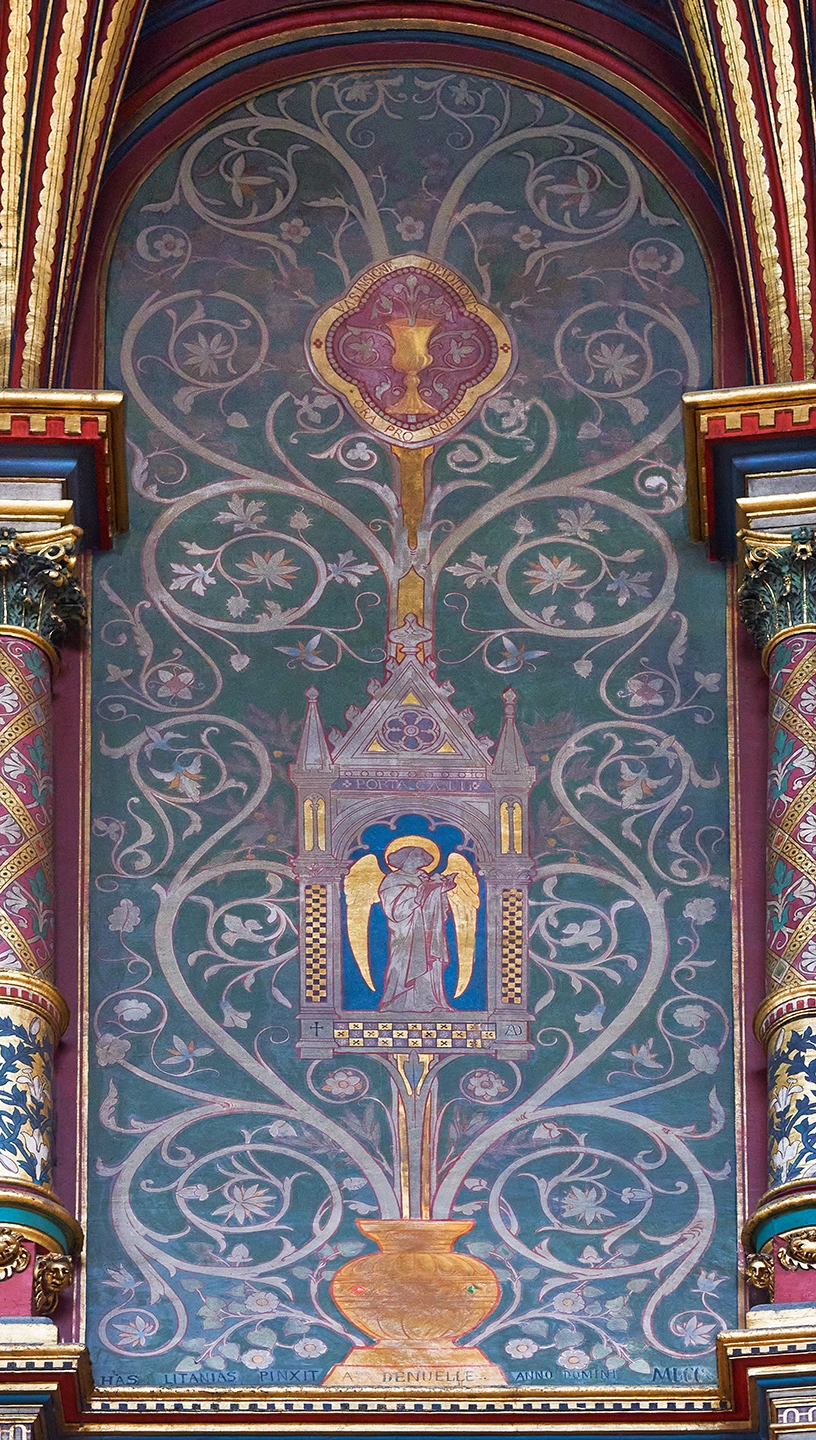
I am aware that for most of you,
Hermeticism seems mysterious, even chimerical, all the more so because this
philosophical current proposes historical and scientific perspectives that
mainstream thinking considers irrational from the outset. I can already hear
the rhetoric of the most indoctrinated: « How
could the men of the past have known what modern science is just beginning to
glimpse? Aren't we superior to those hicks ? »
Yes, and no matter
what he thinks, man today is unaware of his ignorance. But it’s important not
to blame him, because from kindergarten benches to university lecture halls, he
is driven to naively repeat what he has been taught. And since the majority have
grown up in the same system, it’s logical that ‘normal’ people are all
formatted in the same way. To their credit, the pursuit of knowledge and
intellectual and cultural enrichment is no longer a valued activity. Absolutely
nothing is organized to encourage us to read library books and to multiply our
general knowledge; this sad fact is the inexorable consequence of a royal
education that is constantly being dumbed down, of the propagation and
standardization of the culture of the artificial (to the detriment of the
natural), of the promotion and standardization of mediocrity by the dominant
media, and of the dumbing down and hypnotic manipulation of the masses by
television. And above all, the growing denial of a transcendent, saving
spiritual realm. It’s a fact that there are now countless friends who are very
proud of their agnosticism… How sad!
At the beginning of the 21st century, the
collapse of thought reflects the decadence, degeneration, and decline of our
civilization. This intellectual sclerosis has become an increasingly thorny
obstacle to overcome for those who follow the path of spiritual evolution,
personal emancipation, or the Gnostic path. Social conditioning is so powerful
that the intrepid – those who still dare to think for themselves – are often
sidelined and ridiculed. It takes great strength of character to free oneself
from the vindictiveness and judgment of others. This work requires deep and
delicate self-introspection, and very few people are willing to suffer in order
to dissolve the illusions of daily life and become completely free. To be able
to empty one's chalice of all dross and then fill it anew with a brighter light
is an accomplishment that must be earned over time.
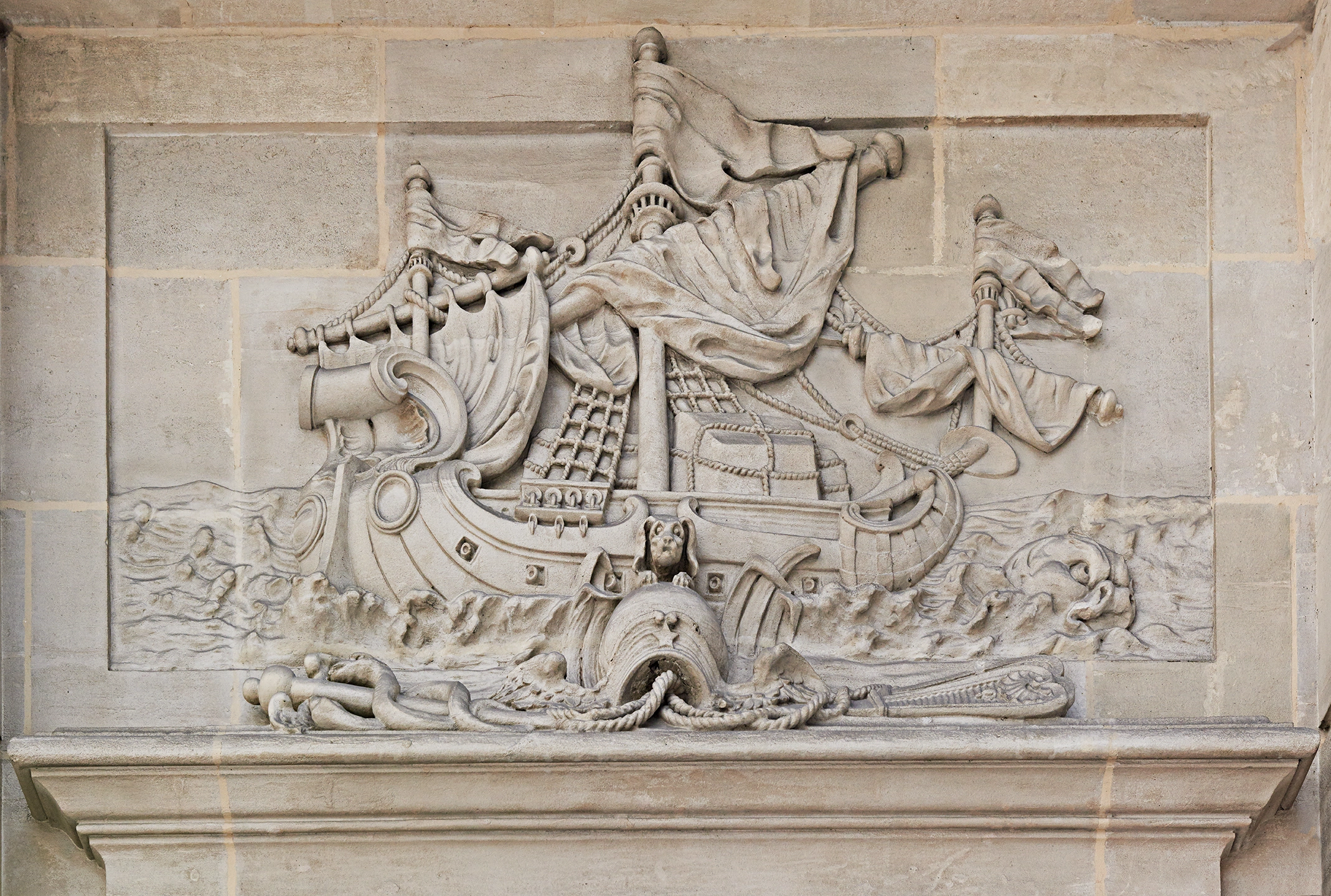
Prudence, temperance, fortitude, and
justice are the cardinal virtues needed to open the Kingdom of God; if
perseverance and truth are our faithful servants on the path of truth, the
vertical essence of the Solar Fire will illuminate our hearts, and the work we
undertake will always be crowned with success. Without this spiritual quest, I
probably wouldn’t have found the courage to share these few lines with you,
because the metaphysical currents on which the winds of this demonstration will
carry us are ridiculed by the orthodoxy of the educational system and are very
poorly understood by today’s globalized culture.
To this end, the
scientific and syncretic study of the major religious symbols is the main axis
– its axis mundi – around which this thesis will unfold. Like a
modern-day Jason in search of the Golden Fleece, guided by the clarity of the
North Star, we will navigate the most mystical and unimaginably vibrant oceans.
So, I invite you to explore sacred science aboard my ship, to lift the veil on
the naturalistic nature of the Holy Spirit, and to set sail for the most
absolute mysteries of all: creation and the origin of space-time.
Ludovic Nicolas
